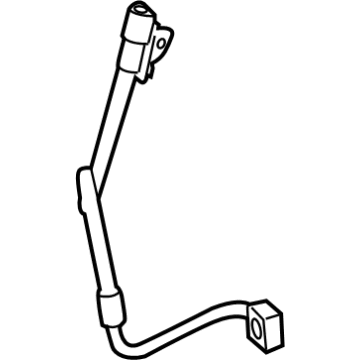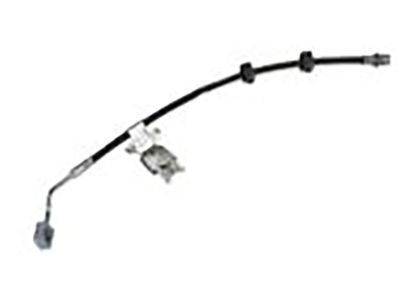
My Garage
My Account
Cart
Genuine Jeep Wagoneer Brake Line
Brake Hose- Select Vehicle by Model
- Select Vehicle by VIN
Select Vehicle by Model
orMake
Model
Year
Select Vehicle by VIN
For the most accurate results, select vehicle by your VIN (Vehicle Identification Number).
9 Brake Lines found
Jeep Wagoneer Brake Line
Jeep Wagoneer Brake Line is also an important component that enables brake fluids to be delivered from the master cylinder to the brake caliper pistons so that the hydraulic braking system is effective. Brake working with metal brake lines is susceptible to corrosion impact, and therefore, the pressure of the hydraulic fluid diminishes due to leakage. The brake hose too has a physical and internal damage and, consequently, affects braking system performance. In case of replacement, both preformed brake line kits and corrosion resistant stainless steel brake hoses provided in the market are quite hassle free for fitting. The most effective add-on is to replace the flexible hoses originating from the engine with those made of stainless steel braid; such a change will enhance the sensitivity and responsiveness of pedals required primarily when performing maneuvers during sporty driving.
Looking for affordable and high-quality auto parts? Then you have already arrived at the proper online shop. We offer all Jeep Wagoneer Brake Line at great affordable prices. Moreover, all genuine Jeep Wagoneer Brake Line come with a manufacturer's warranty. In the long run, you would realize you have saved a lot of trouble and money with OEM parts from here.
Jeep Wagoneer Brake Line Parts Questions & Experts Answers
- Q: What are the steps for inspecting and replacing brake line on Jeep Wagoneer?A:About every six months, inspect the rubber hoses that connect the steel brake lines with the front and rear brake assemblies for cracks, chafing, leaks, blisters, and other damage. Use a light and mirror for a thorough check. If any hose exhibits these conditions, replace it with a new one. To replace the front brake hose, disconnect the brake line from the hose fitting without bending the frame bracket or brake line. Unbolt the hose from the frame using a Torx drive socket. Remove the inlet fitting bolt from the Brake Caliper and separate the hose from the caliper, discarding the sealing washers. Install the hose by attaching it to the caliper with new sealing washers, tightening the inlet fitting bolt to the specified torque. Connect the brake line to the hose fitting without twisting the hose, and install the bolt retaining the hose to the frame securely. Tighten the brake line fitting securely. Ensure there are no kinks in the hose and that it doesn't contact any part of the suspension. For the rear brake hose, disconnect the hose at the frame bracket using a back-up wrench, being careful not to bend the bracket or steel lines. Remove the U-clip with pliers and separate the female fitting from the bracket. Disconnect the two hydraulic lines at the junction block, then unbolt and remove the hose. Bolt the junction block to the axle housing and connect the lines securely. Install the female end of the hose in the frame bracket without twisting it, and install the U-clip retaining the female end to the bracket. Attach the steel line fittings to the female fittings using a back-up wrench, being careful not to bend the bracket or steel line. Ensure the hose installation did not loosen the frame bracket and tighten it if necessary. Fill the master cylinder reservoir and bleed the system. When replacing brake lines, use the correct parts and avoid using copper tubing. Purchase steel brake lines from a dealer or auto parts store. Prefabricated brake lines with flared tube ends and installed fittings are available. When installing the new line, ensure it is securely supported in the brackets and has sufficient clearance from moving or hot components. After installation, check the master cylinder fluid level, add fluid as necessary, bleed the brake system, and test the brakes carefully before driving in traffic.





















